
 The body’s overall de-stress mechanism, from a functional perspective, is carried out largely by the NeuroEndoMetabolic (NEM) Stress Response apparatus and the detoxification circuit. There are six total circuits within this apparatus, each comprising multiple systems and organs. They all work in unison when stress arrives at the doorstep to ensure internal homeostasis is continually maintained.
The body’s overall de-stress mechanism, from a functional perspective, is carried out largely by the NeuroEndoMetabolic (NEM) Stress Response apparatus and the detoxification circuit. There are six total circuits within this apparatus, each comprising multiple systems and organs. They all work in unison when stress arrives at the doorstep to ensure internal homeostasis is continually maintained.
Relying on the hypothalamus-pituitary-adrenal (HPA) hormonal axis as the main conduit for relieving stress is an incomplete model from a functional perspective. The HPA axis plays an important part and is most prominently deployed when stress is mild or moderate. However, the body has additional mechanisms in place when stress is severe or perceived to be a threat to survival. These are activated at different times as the body sees fit. When combined with the HPA axis, these circuits become a fine-tuned orchestra. Thus far, it has worked well and provided for the survival of our species.
There are 6 functional circuits, each comprised of multiple organs and systems. They are all part of the body’s NeuroEndoMetabolic (NEM) Stress Response System that regulates stress from a global perspective. One of the most important circuits is the detoxification circuit. It is comprised of the liver, the extracellular matrix (ECM), and the immune system. Together, they get rid of excessive, unwanted, reactive metabolites that come from stress. Remember that stress can be physical or emotional. It represents an exertion on the body that requires energy expenditure to normalize. When this circuit is working well along with other circuits, stress is automatically resolved in the background without you knowing it.
However, if there is detoxification circuit dysfunction (and it is not functioning as it is supposed to be), clinical symptoms can be devastating.
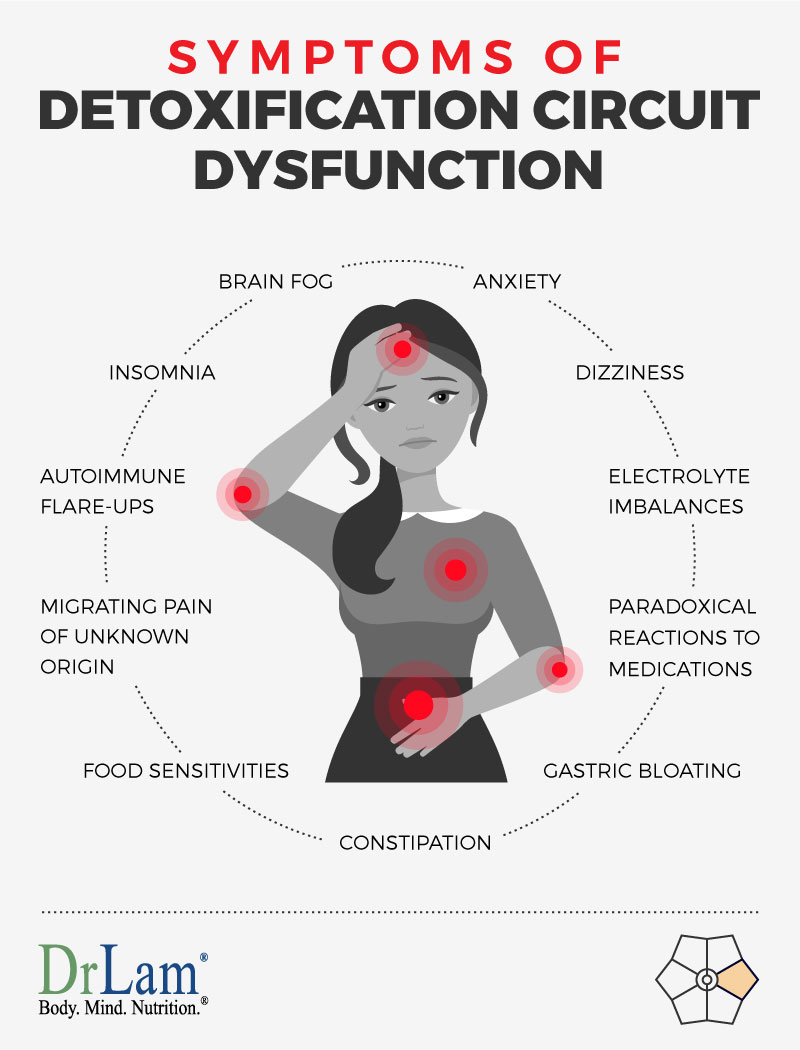
To understand how the detoxification circuit works, we first have to understand what metabolites are. A metabolite is defined as a product of metabolism. Each substance, once it enters the body, needs to be broken down into smaller pieces as part of the excretion process to rid the body of unwanted by-products. Toxic substances the body receives from daily living include hormone-laced food, polluted air, stress, medications, and unclean water. Excessive metabolites are toxic to the body.
Fortunately, the body has a built-in detoxification mechanism to convert natural compounds into inert metabolites prior to excretion. The liver is the primary organ responsible. Most toxins are neutralized inside the liver by a two-step process. Phase 1 makes fat-soluble toxins into water-soluble metabolites. Phase 2 takes the metabolites from phase 1 and inactivates them. The liver is also a depot for many immune cells, such as lymphocytes, which are ready to be called into action to neutralize pathogens.
Problems usually come when foreign or synesthetic compounds, such as pesticides, pollutants, medications, and herbs, are introduced in excess. The body does not have a built-in detoxification mechanism robust enough to do the job completely, especially when it is weak. Metabolites may not be removed properly or quickly enough. Some of these metabolites are not inert but active. Active metabolites are also called reactive metabolites because they react with other things in the body and can become toxic. In most cases, the build-up of chemically reactive metabolites is temporary, and the body gets rid of them after multiple passes through the system. In some cases, such as with toxic metals like mercury, the toxin never leaves the body on its own.
Triggers for excessive metabolites include:

As you can see, almost no one living in the modern, stressful world can escape having reactive metabolites. The degree of damage depends on the quantity and frequency of exposure. The body’s built-in detoxification circuit is designed to get rid of unwanted metabolites to a certain degree. If they are not properly and promptly removed, the risk of accumulation in the body grows over time.
As mentioned earlier, metabolites can be inert or reactive. Reactive metabolites are the ones that cause most of the damage inside the body. The more unwanted reactive metabolites we have, whether from food, stress, medication, or nutritional supplements, the heavier the burden is on the body, especially the liver, to get rid of them. While those who are healthy have no problem accomplishing this task, the same cannot be said for those who have chronic illnesses or a weak constitution. They are most vulnerable to metabolite buildup.
Reactive metabolite overload (RMO) is a term used to describe a body that has excessive reactive metabolites to the degree that the detoxification circuit becomes dysregulated, and clinical symptoms start to surface.
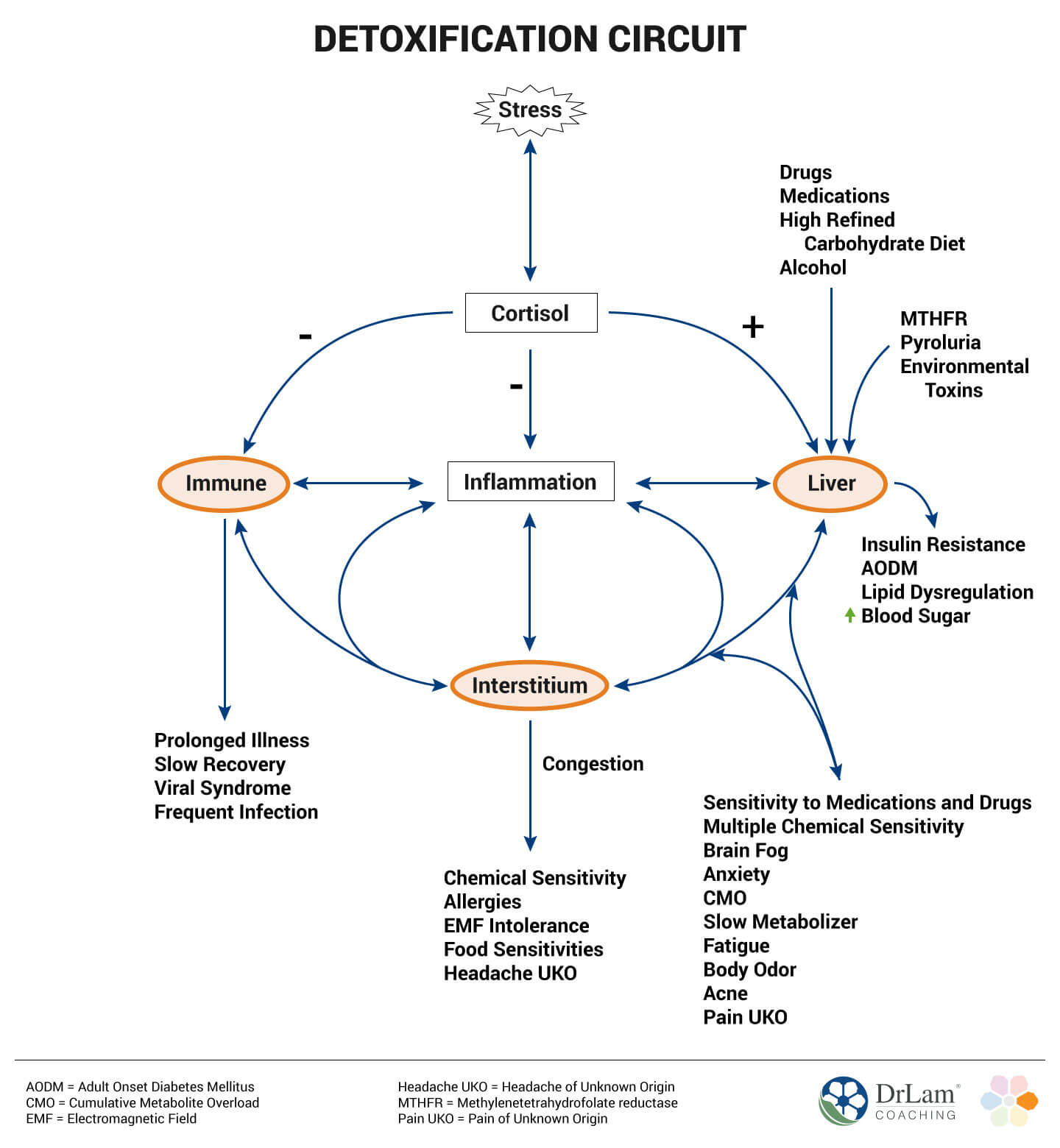
When the body is in a state of RMO, it can trigger or lead to liver congestion, ECM pollution, and immune system hyperactivation. This triple overload can create a perfect storm that leads to detoxification circuit dysfunction.
Let us see how this happens. Remember that the body is a closed system. Homeostasis can be disrupted by accumulation of excessive metabolites beyond the body’s ability to promptly clear. All metabolites, inert or reactive, circulate within the entire body continuously until excreted through the lungs, skin, bowel, or kidneys. While in transit, one of the first systems to experience toxic effects is the extracellular matrix, the ECM.
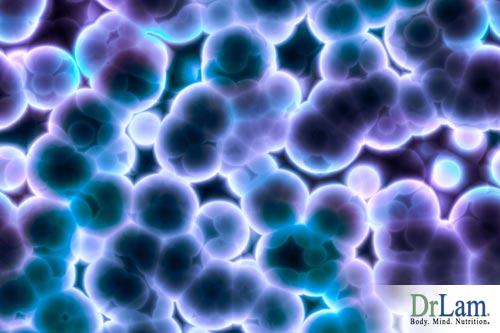 The ECM comprises spaces outside of each cell and is an important highway network upon which metabolites travel from one part of the body to another. Excessive metabolites within the ECM will invariably lead to ECM pollution. Like a highway with too many cars, the speed of flow slows down and more exhaust enters the air. The result is more pollution. Also, the more cars on the highway, the higher the chance of accidents. If the volume of cars and speed of flow is not normalized, the ECM can become congested, aggravating the system even more. It becomes a vicious cycle. Because the ECM is also responsible for intercellular messaging, disruption of transmission can occur, leading to defective signal transfer between cells.
The ECM comprises spaces outside of each cell and is an important highway network upon which metabolites travel from one part of the body to another. Excessive metabolites within the ECM will invariably lead to ECM pollution. Like a highway with too many cars, the speed of flow slows down and more exhaust enters the air. The result is more pollution. Also, the more cars on the highway, the higher the chance of accidents. If the volume of cars and speed of flow is not normalized, the ECM can become congested, aggravating the system even more. It becomes a vicious cycle. Because the ECM is also responsible for intercellular messaging, disruption of transmission can occur, leading to defective signal transfer between cells.
Reactive metabolites eventually and invariably will be transported to the liver for breakdown. Inside the liver, this job falls mostly on the cytochrome P450 detoxification system. Excess reactive metabolites then become a burden to the liver. The more metabolites received, the harder the liver has to work to remove them.
The intended result is to create more inert metabolites, which are harmless, rather than reactive metabolites, which can be harmful. Thus, as the liver is put on overdrive, the body is flooded with more downstream metabolites, both inert and reactive. Unfortunately, inert metabolites also have to be eliminated. They may not be toxic, but nevertheless, they can contribute to congestion and slow the flow of the ECM. As the velocity of flow within the ECM reduces, toxic, reactive metabolites within can cause localized damage to the immediate extracellular space, damaging the extracellular scaffolding necessary for organ structural integrity.
All metabolites, from a variety of sources, eventually converge and travel within the ECM highway system to the kidneys for excretion after processing by the liver. Metabolites not cleared immediately recycle within the body, causing systemic inflammation and immune system activation.
RMO, therefore, is undesirable. It sets the body up for multiple insults, leading to what is known as a retoxification reaction. On top of this, the liver can become congested as excessive inert and reactive metabolites accumulate within from backflow due to EMC congestion. This can result in what is commonly known as ‘sluggish liver’. Localized hepatotoxicity can occur, damaging the already overworked liver. Collectively, this vicious cycle is a decompensatory cascade, between the ECM pollution and liver congestion, ultimately rendering the entire body toxic, like a septic pool or swamp. This is when the detoxification circuit becomes damaged and dysfunctional.
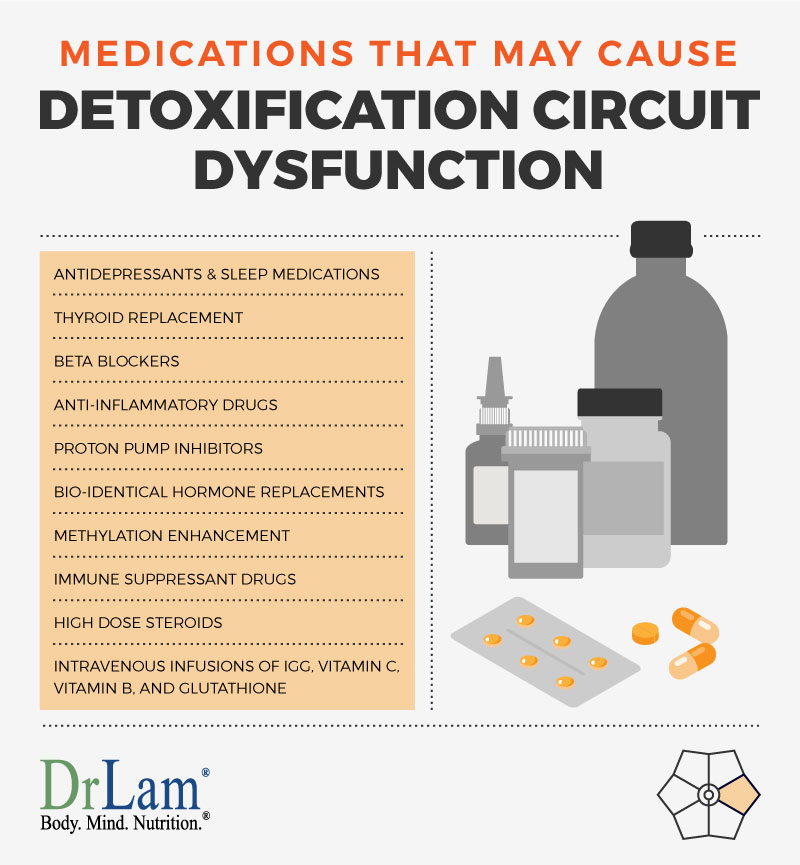
Along with the liver and the ECM, the immune system forms the third pillar of the detoxification circuit. The immune system is able to detect pathogens that may become active when the body is under stress. It can sense an increase in metabolites as the liver and the ECM become congested. To protect us, an inflammatory response is initiated to help neutralize any pathogens that may take this opportunity to surface. 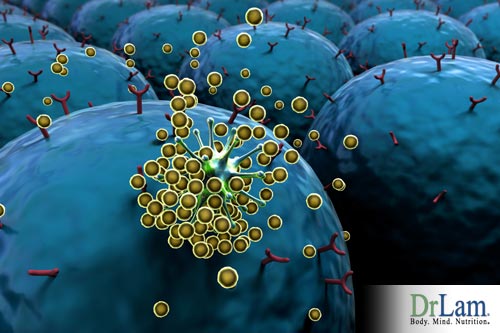 The immune system’s job is to attack and neutralize a myriad of active and potential pathogens simultaneously. Flare-ups of co-infectious states (such as H. pylori and Lyme Disease) and chronic pathogens (such as candida and EBV) will be automatically squashed if the immune system works properly. A properly working immune system will generate metabolites, much of it from pathogens that have been destroyed but still have to be cleared out of the body.
The immune system’s job is to attack and neutralize a myriad of active and potential pathogens simultaneously. Flare-ups of co-infectious states (such as H. pylori and Lyme Disease) and chronic pathogens (such as candida and EBV) will be automatically squashed if the immune system works properly. A properly working immune system will generate metabolites, much of it from pathogens that have been destroyed but still have to be cleared out of the body.
Laboratory tests indicative of an active immune system include elevated white blood cell count and CRP (C-reactive protein). Unfortunately, these tests can be elevated from a variety of sources and therefore is not very specific.
Aside from external pathogen-induced immune activation such as a flu or viral upper respiratory tract infection, or a sinus infection, it is important to note the following can also activate the immune response:
Food sensitivity. Eating a food you are sensitive to can cause inflammation and lead your immune cells to be activated.
Microbiome imbalance. The gut is a complete ecosystem on its own, perfectly maintained by beneficial bacteria. When this system is off balance, good, beneficial bacteria are replaced by foreign, non-beneficial bacteria, as it is for those with SIBO, gastric reflux, H. pylori, irritable bowel, inflammatory bowel disease, catabolic state, or gastric slowdown in advanced adrenal fatigue. Gastric assimilation becomes suboptimal. Foreign opportunistic bacteria and stealth viruses transition from a dormant to an active state. This causes the immune system to go into full throttle.
Increased intestinal permeability (leaky gut). When food particles cross the gastrointestinal mucosa, inflammation is triggered. Undigested foods are supposed to be inside the GI tract. When it enters hepatic circulation and the rest of the body, the immune system recognizes this as foreign and attempts to attack and neutralize it.
Heavy metal toxicity and chemical sensitivity. Environmental toxins are everywhere. It is impossible to escape if one lives in the urban world. Excessive toxins accumulating in the body trigger the immune system to rid the body of such unwanted material.
Chronic and stealth infections. We are exposed to a constant barrage of virus, fungi, bacteria, and protozoans. Some pathogens tend to stay with us for a long time in a dormant state. They become activated and flare up when your immune system is weak. These organisms include Borrelia burgdorferi, Babesia microti, Candida albicans, EBV, Cytomegalovirus (CMV), and many others.
Failure to help the body regain its footing and relieve the reactive metabolite overload can lead to worsening systemic signs and symptoms of detoxification circuit dysfunction.  Subtle signs include an increase in food sensitivities, gastric bloating, constipation, exaggerated responses to drugs, paradoxical reactions to medications, insomnia, brain fog, migrating pain of unknown origin, anxiety, psoriasis, autoimmune flare-ups, tingling, dizziness, burning sensations in the mouth when under stress, fatigue, heart palpitations, stress intolerance, and electrolyte imbalances. Unfortunately, most of these symptoms are ignored and passed over as a normal part of the aging process until severe. On closer examination, however, it is clear that the symptoms are deep rooted, well beyond what any single condition can encompass.
Subtle signs include an increase in food sensitivities, gastric bloating, constipation, exaggerated responses to drugs, paradoxical reactions to medications, insomnia, brain fog, migrating pain of unknown origin, anxiety, psoriasis, autoimmune flare-ups, tingling, dizziness, burning sensations in the mouth when under stress, fatigue, heart palpitations, stress intolerance, and electrolyte imbalances. Unfortunately, most of these symptoms are ignored and passed over as a normal part of the aging process until severe. On closer examination, however, it is clear that the symptoms are deep rooted, well beyond what any single condition can encompass.
Because of the level of complexity in clinical presentation, physicians are often overwhelmed and left with little choice but to patch symptoms as their patient’s complaint list grows. Aggressive physicians may start the patient on a battery of medications, including the following:
While transient symptoms may improve initially, most medications fail over time because of side effects, intolerance, or resistance.
After extraordinary and heroic efforts, physicians usually give up. Looking from afar, the body seems to be very irritable. Unfortunately, the root cause cannot be found by the allopathic approach. Something is wrong, but all medical workups continue to be largely normal. It’s like walking down a street and seeing smoke coming out of multiple windows of a house that it is not supposed to. You know something is wrong, but the source of the problem cannot be located.
Detoxification circuit dysfunction represents a perfect storm with excessive reactive metabolites, liver congestion, ECM pollution, and an immune state on full throttle, resulting in a fragile body that is often housebound and bedridden. The body is weak, and daily function is marginal at best. The clinical picture is serious, as it reflects a system-wide malfunction of the detoxification circuit. This is very different from healthy people who are low in energy but live a normal life and feel revitalized after a liver flush, a detoxification fast, or a coffee enema. The difference comes down to the degree of damage and resulting clinical incapacitation. A body can recover more easily and on its own if only one of the three aspects of the detoxification circuit is dysregulated. Giving the body a few days of rest by fasting may be all that is needed. When the perfect storm hits, however, the entire detoxification circuit can be affected and severely damaged. The clinical picture is much more severe. Any attempt to detoxify the body can actually make matters much worse.
 Because conventional and even naturally oriented physicians are seldom exposed to such a perfect storm, with convoluted clinical presentations in a body that is very brittle and fragile, many mistakes are made by well-intentioned doctors. They do not fully realize that invasive investigation and trial-and-error symptoms patching during this time may easily make the sufferer much worse. The reason is simple. Without a clear idea of what the root issue is, heroic attempts by well-intentioned physicians to patch symptoms invariably lead to even more reactive metabolites being introduced to the body at a time when it is already overloaded. This includes introduction of radioactive dyes needed for diagnostic tests such as MRIs and CT scans, medications to help stabilize mood, antimicrobials for co-infections such as candida and H. Pylori, immunosuppressants for autoimmune flare-ups, bio-identical hormones to increase energy, proton pump inhibitors for gastric discomfort, and sleep meds for insomnia, just to mention a few. The more metabolites are introduced, the more toxic and sensitive the body becomes. Any attempt to reduce toxicity only adds to the existing ECM and liver congestion. A marginally weak body may crash under such insult.
Because conventional and even naturally oriented physicians are seldom exposed to such a perfect storm, with convoluted clinical presentations in a body that is very brittle and fragile, many mistakes are made by well-intentioned doctors. They do not fully realize that invasive investigation and trial-and-error symptoms patching during this time may easily make the sufferer much worse. The reason is simple. Without a clear idea of what the root issue is, heroic attempts by well-intentioned physicians to patch symptoms invariably lead to even more reactive metabolites being introduced to the body at a time when it is already overloaded. This includes introduction of radioactive dyes needed for diagnostic tests such as MRIs and CT scans, medications to help stabilize mood, antimicrobials for co-infections such as candida and H. Pylori, immunosuppressants for autoimmune flare-ups, bio-identical hormones to increase energy, proton pump inhibitors for gastric discomfort, and sleep meds for insomnia, just to mention a few. The more metabolites are introduced, the more toxic and sensitive the body becomes. Any attempt to reduce toxicity only adds to the existing ECM and liver congestion. A marginally weak body may crash under such insult.
Physicians need to be on clinical alert in order to detect detoxification circuit dysfunction. The typical history involves:
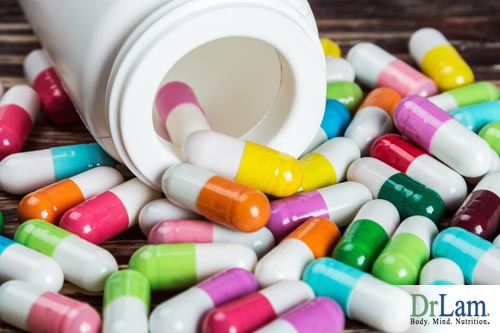
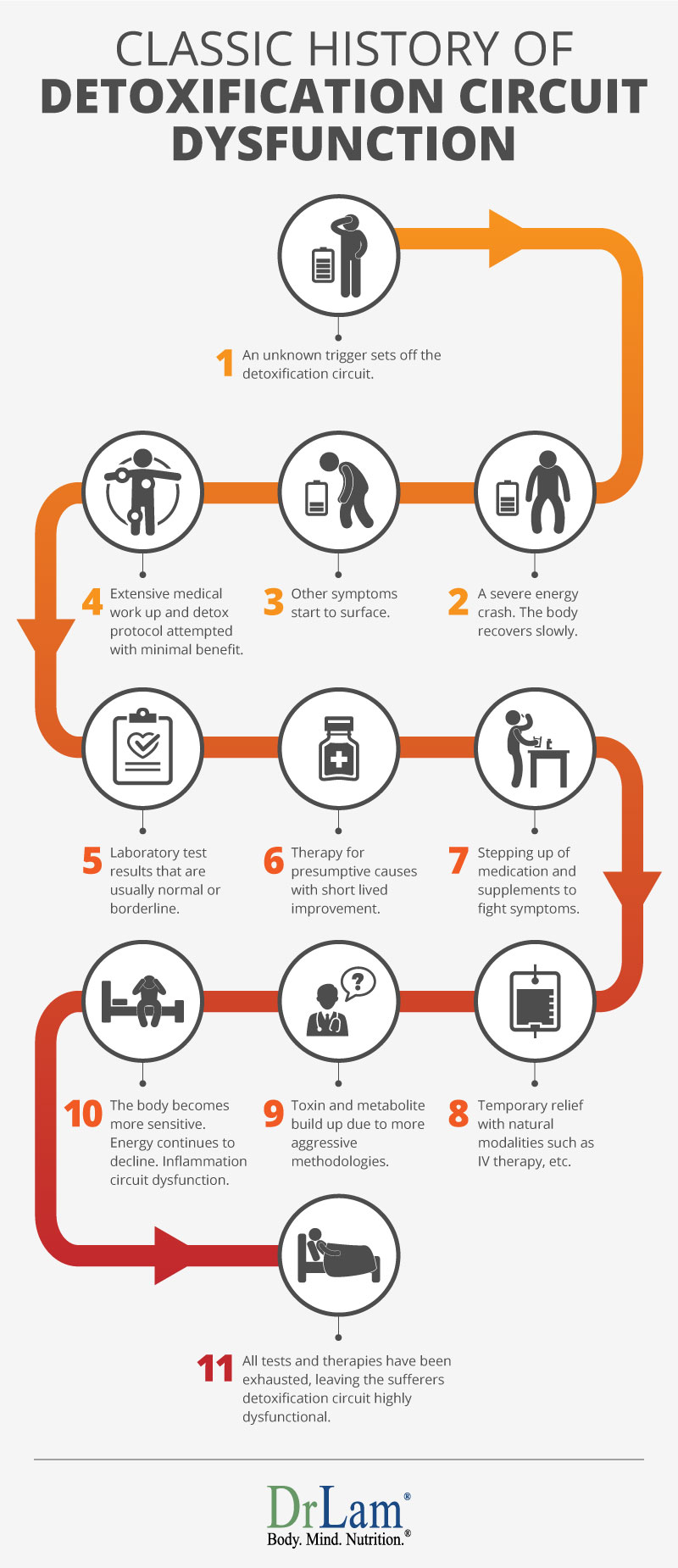
The failure to recognize signs and symptoms of detoxification circuit dysfunction is common. Few conventional physicians are knowledgeable or have enough clinical experience in this matter to be on alert. The lack of laboratory tests that are sensitive enough to detect such a condition compounds the confusion. Patients are generally told all is well, or nothing can be done. Some are told they have autoimmune disease, but the outcome of remediation is more often than not blunted at best. Over time some may become dependent on steroids, thyroid replacement, and bioidentical hormone replacement. Others are told to take antidepressants and sleep medications for symptom relief as well. Physicians eventually abandon most patients.
One should not jump to the conclusion that there is indeed detoxification circuit dysfunction without taking the time and patience to piece the history together. Also required is a careful examination of whether the clinical puzzle can be explained based on sound physiological and medical logic from a functional perspective. This can be a painfully slow process lasting months. Piecing together complex history takes time and multiple encounters with a knowledgeable physician before a detoxification circuit dysfunction is suspected. Most sufferers have seen multiple doctors and taken a myriad of failed supplements and medications at one point or another. Many are incapacitated.
To fully understand the degree of detoxification circuit dysfunction, qualitative challenges need to be issued to evaluate in real time the body’s detoxification capability, reserve, sensitivity, immune state, and constitution. Only with close, continuous follow-up and monitoring over a period of time will a clinical picture of the detoxification circuit dysfunction emerge. A qualified physician on the lookout for this clinical scenario is therefore the first step in recovery.
Once ascertained qualitatively, common sense would dictate that it can only be resolved by one solution long-term. You must reduce the overload that triggered the dysfunction. This involves steps to reduce reactive metabolites, decrease liver congestion, depollute the extracellular space, and prevent excessive immune excitation.
However, this is easier said than done. Most attempts by inexperienced clinicians fail as the condition of patients worsens because:

Only generalized conceptual approaches can be offered here because each person is different and what works for one may indeed make another person worse. There is no one-size-fits-all protocol possible.
A holistic functional perspective, coupled with clinical experience and a systematic plan, is the key to recovery. With close monitoring, patience, and persistence, recovery can be affected and sustained. Roller coaster rides or relapses may be experienced from time to time, but the intensity and frequency usually reduces over time under capable hands. It is constantly surprising to find that the body possesses such an amazing recovery and self–healing ability, if given the right natural tools and time. On the flip side, the wrong approach can worsen the clinical situation. If you are concerned about your detoxification circuit and would like a program that’s right for you, talk to our team at +1 (626) 571-1234 for a free consultation or click here to use our Ask the Doctor system.